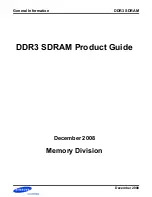
1MRS751852-MUM
SYS 600 *9.0
41
MicroSCADA Pro
System Overview
Technical Description
Serial lines
Serial transmission of data can be used for upper level and process communication.
Usually it is used when communication cannot be realized in a LAN network. The
serial transmission passes through the COM ports of the computer.
4.5.3.
Communication hardware
Communication hardware includes protocol hardware, connection cards and
supporting hardware.
Protocol hardware
Protocol hardware is needed to run the protocols. It can be either a PC or a DCP card.
Connection cards
Connection cards are used to handle communication between base system and
external nodes. They are communication hardware that can be placed in the base
system computer. For example PCLTA card or Multiport serial card are connection
cards. PC-NET software uses PCLTA card (PC LonTalk Adapter) or Multiport
Serial card to communicate.
PCLTA card is an ISA bus card. Two NET lines can be connected to it and to the
L
ON
W
ORKS
network. Multiport serial card is a connection card inside the computer.
Its purpose is to extend the amount of COM ports that can be used for
communication.The COM ports of the computer can be used for other tasks.
Supporting hardware
Supporting hardware is communication hardware outside the NET unit. It can be
e.g. a modem, a network card, a fallback switch or a time synchronisation device.
A modem is a device that converts the computer’s digital signals to analog signals
before transmission. Thus, one data transmission needs two modems, one at each
end of the line.
Network cards are used for connecting a computer to a network, for example to a
LAN network. For redundant LAN, a special type of network card is needed.
A fallback switch is a card that is used to switch a serial line to another one (e.g. with
redundant front-ends). This means that it changes, for example, the secondary DCP-
NET unit to a primary DCP-NET unit.
Time synchronisation means that the time in the internal clocks of the MicroSCADA
system are synchronised. The time can also be changed so that it is the same as an
external time source. An external time source can be for example:
• GPS (Global Positioning System), which is normally used for satellite based
navigation
• Radio clock
• Device in upper level system, e.g. a network control system
Clocks in a base system and in a communication front-end are often synchronised.












































